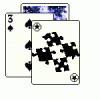I'm looking back at my fundamentals, so there's no need to tell me to do that XD (not trying to sound harsh though! any criticism is welcome!)
Anyways, I have a question. So, I have a player object (which is basically a rectangle) with these parameters: x, y, Color, width, length, and health.
My draw method is filling in a rectangle with that color and the x and y coordinates along with the width, etc. In my main class, I create a player object and draw it from the main class (a paint method I have in the main class to be specific). Everything works fine, but when I try making TWO player objects, it just uses the second one I initialized and pretty much ignores the first. Is my method of painting it wrong?
Again, I completely understand that I have to re-learn fundamentals or just learn MORE, I guess.









